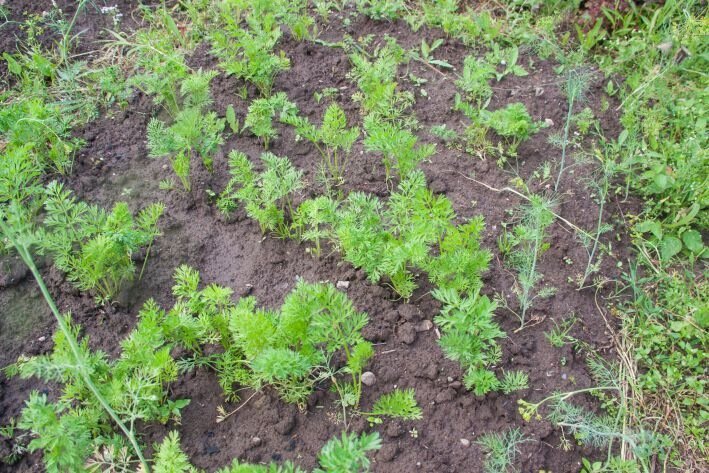Companion plantings have long been popular with gardeners. It is convenient, saves a lot of space, helps fight diseases and pests, and in general it is simply beautiful.
But if you choose the wrong plants to plant together in one bed, you can completely lose the harvest.
Anastasia Kovrizhnykh , an expert of the online publication "BelNovosti", a scientist, agronomist and landscape designer, spoke about neighbors in the garden beds.
There are plants that help each other, but there are also those that cannot grow together.
What plants are contraindicated to be planted in the same bed
Plants from the same family will not feel good together; they are united by pests and diseases that will be very happy to have found such a tasty bed.

Plants of the same height will also not like being in the same place, and if they also have dense foliage, they will not have enough light.
Most often, gardeners combine umbellate crops without even suspecting that it is better not to plant them together. For example: dill, parsley and cilantro often end up in the same bed. The only plant from the umbellate family that is loyal to its relatives is carrots.
Plants that make everyone feel bad
Such plants suppress all the others that grow near them, these include wormwood and fennel. They need to be isolated and always grown in a separate bed.
Sunflowers often react aggressively to neighboring plants and try to suppress them, so it is better to plant them in a garden away from other crops.
Garlic and onions will harm legumes and cabbage crops, so you should avoid planting them nearby.
Plants that make everyone feel good
Spinach and lettuce have the ability to release active substances that activate root growth in neighboring plants in the garden bed; in addition, they shade the soil and thereby retain moisture.
There are also plants in the garden that, in principle, don’t care who they grow with: tomatoes, cucumbers, beets and carrots; any companion will do for them except wormwood and fennel.
Contrary to popular belief, corn is not an aggressor, but a helper. It shades the plantings well and does not allow the scorching sun to dry out the sprouts, corn also protects from the wind, creating a good microclimate in the garden bed.
Best for pests
These plants help fight most pests, beans will not only help in the fight against pests, but will also enrich the soil for planting in the new year.
Parsley is also friends with everything except umbelliferous plants (carrots are not included in this number).
Onions and garlic help in the fight against fungal diseases of plants.
Flowers will not only help in the fight against pests, but also decorate the garden. Universal flowers that suit all plants are calendula, marigolds, zinnias, nasturtium, chrysanthemum and cosmos.
The best couples in the garden
Onions and carrots
Many people know that these crops help each other fight pests, but do not interfere with each other in any way, so you can safely place them in the same bed.
Basil and tomato
They go very well together and not only help fight pests, basil requires warmth for good development, and there is plenty of it in a greenhouse tomato bed.
Corn and cucumbers
Cucumbers happily cling to corn leaves and stretch upward. Corn shades cucumbers from the scorching sun, and cucumbers in turn shade the roots of corn.
If you combine plants correctly, the result will certainly please you.
Previously we talked about how to care for home citrus fruits .









